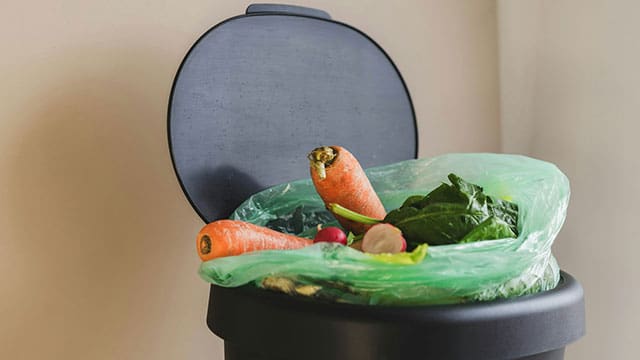Avoidable food waste represents a loss of $58 billion

For interview requests, click here
A new report by Second Harvest, titled The Avoidable Crisis of Food Waste, underscores the staggering scale of food waste in Canada. The findings reveal that 46.5 per cent of the food in Canada goes to waste, with 41.7 per cent of this waste deemed avoidable. This avoidable food waste represents a loss of $58 billion – a sobering figure that highlights the economic and environmental impact of wasted food.
Led by food waste expert Dr. Martin Gooch, the report is the second comprehensive assessment in five years, and unfortunately, Canada’s food waste situation has shown little improvement. However, there is hope.
Dalhousie University’s Agri-Food Analytics Lab recently introduced the Canadian Food Sentiment Index, which explores Canadians’ attitudes toward food waste. According to this index, 76.6 per cent of Canadians report actively trying to reduce food waste compared to a year ago. Rising food prices have encouraged more consumers to be mindful of their household food inventory, a positive trend that can significantly reduce waste at the consumer level.
One of the main contributors to household food waste is the misunderstanding around best-before dates – another critical point highlighted in Second Harvest’s report. Many consumers now recognize that a best-before date does not equate to “bad after.” These dates, largely unsupported by scientific research, are designed to indicate optimal freshness rather than food safety, especially if the packaging remains unopened. Despite this, 55.4 per cent of Canadians still discard food that has passed its best-before date, even when the product remains sealed.
To help address this issue, Too Good To Go has launched the “Look-Smell-Taste” initiative in partnership with food manufacturers and retailers across Canada. In the “Look-Smell-Taste” initiative, informational stickers will be placed on select food items to encourage consumers to evaluate freshness with their senses rather than relying solely on printed dates.
The method is straightforward: consumers are prompted to look for signs of spoilage and smell to assess freshness and taste to confirm edibility. When consumers scan these stickers with the app, they receive additional tips and guidance, empowering them to make informed choices about whether food is still good to eat. This sensory-based approach can foster a more intuitive understanding of food quality, reducing unnecessary waste and helping households save money. While some people may still find eating food past its best-before date off-putting, others are embracing it to save money.
The food rescue market, which involves salvaging food that might otherwise go to waste, is gaining traction across the country. Stores specializing in discounted food products near or past their best-before dates are popping up nationwide, with grocery chains increasingly joining the movement. Montreal-based chain Liquidation Marie, for example, is opening its fourth store dedicated exclusively to “rescue foods.” A typical shopping trip there can cut a customer’s food bill by 50 to 80 per cent – a compelling option for those looking to save money amid rising grocery prices.
Not everyone, however, welcomes this development. Liquidation Marie’s expansion in Montreal has reportedly led to anonymous complaints filed with Quebec’s Ministry of Agriculture, suggesting unfair competition with conventional retailers. In today’s high-cost food landscape, this response is disappointing. Consumers need all the support they can get, and food rescue initiatives offer tangible help in an economy strained by inflation.
An economy that values food will waste less of it. Reduced waste promotes greater food security and a lower environmental footprint. Second Harvest’s report highlights that avoidable food waste generates 25.69 million metric tonnes of CO₂ emissions each year – the equivalent of 253,223 one-way flights from Toronto to Vancouver. By reducing food waste, we take a significant step toward a more sustainable and environmentally responsible future.
Ultimately, The Avoidable Crisis of Food Waste calls on Canadians to rethink how they value food. Simple changes – using leftovers more often, freezing food strategically, exploring food rescue options, and relying on innovative solutions like Too Good To Go’s Look-Smell-Taste approach – can make a meaningful difference. There’s a food rescuer in all of us, ready to help tackle this crisis.
Dr. Sylvain Charlebois, a Canadian professor and researcher specializing in food distribution and policy, is a senior director of the Agri-Food Analytics Lab at Dalhousie University and co-host of The Food Professor Podcast. He is frequently cited in the media for his insights on food prices, agricultural trends, and the global food supply chain.
Explore more on Food insecurity, Food prices, Food supply, Cost of living
Troy Media
Troy Media is committed to empowering Canadian communities by providing independent, insightful analysis and commentary. Our mission is to support local media in building an informed and engaged public by delivering reliable content that strengthens community connections, enriches national conversations, and helps Canadians learn from and understand each other better.

